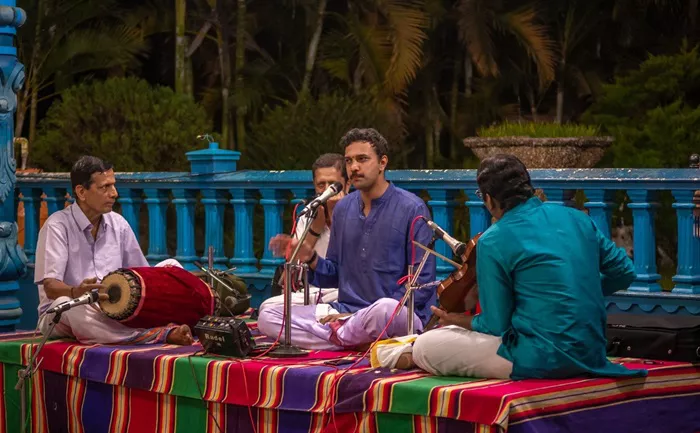Hindustani classical music, with its intricate melodies and profound spiritual essence, stands as one of the world’s oldest and most revered musical traditions. Originating from the Indian subcontinent, this rich art form has captivated audiences for centuries with its complex rhythms, emotive expressions, and deep-rooted cultural significance. In this comprehensive exploration, we delve into the essence of Hindustani classical music, uncovering its history, key characteristics, instruments, styles, and its enduring impact on global musical landscapes.
Origins and Historical Evolution
The origins of Hindustani classical music can be traced back to ancient scriptures and traditions, particularly the Samaveda, one of the four Vedas in Hinduism. This sacred text contains hymns and chants that laid the foundation for musical concepts like ragas (melodic frameworks) and talas (rhythmic cycles). Over millennia, these foundational elements evolved through interactions with diverse cultures, including Persian, Afghan, and Central Asian influences.
During the medieval period, Hindustani music underwent significant transformations under the patronage of various rulers and empires. The Bhakti and Sufi movements infused spiritual fervor into musical expressions, emphasizing devotion and mysticism. Notable contributions from luminaries like Amir Khusrau enriched Hindustani music with Persian poetic forms, intricate compositions, and the development of iconic instruments like the sitar and tabla.
See Also: Neoclassical Art and Classical Music: What Do They Have in Common?
Key Characteristics and Elements
Hindustani classical music is renowned for its improvisational nature, where artists engage in elaborate melodic and rhythmic improvisations within the framework of ragas and talas. Ragas, the melodic structures, are based on specific scales, each evoking distinct emotions and moods. They are characterized by a set of notes, ornamentations (gamakas), and melodic phrases (pakad), creating a rich tapestry of sonic aesthetics.
Talas, on the other hand, represent rhythmic cycles and patterns that govern the timing and progression of musical compositions. Common talas include the teental (16 beats), rupak (7 beats), and dadra (6 beats), each offering unique rhythmic complexities and opportunities for artistic expression.
The vocal and instrumental traditions of Hindustani classical music are equally revered. Vocalists, known as khayal singers, master the art of intricate melodic embellishments, emotional modulation (bhava), and nuanced improvisations (alap, taan). Instrumentalists, including sitarists, sarod players, and tabla maestros, showcase virtuosity through their dexterity, creativity, and mastery of complex techniques.
Instruments of Hindustani Classical Music
Central to the sonic tapestry of Hindustani classical music are its iconic instruments, each possessing unique tonal qualities and expressive capabilities:
Sitar: The sitar, with its resonant strings and distinctive gourd body, is synonymous with Hindustani music. Played with a mizrab (metal pick), the sitar produces a mesmerizing blend of melodic flourishes and intricate ornamentations.
Tabla: The tabla, a pair of hand drums consisting of the smaller dayan and larger bayan, forms the rhythmic backbone of Hindustani music. Tabla players create intricate rhythmic patterns using their fingers (tabla bols), showcasing a dynamic interplay of beats and accents.
Sarod: The sarod, with its metallic fingerboard and resonant sound chamber, is renowned for its emotive depth and lyrical phrasing. Sarod exponents weave intricate melodic passages and rhythmic cycles, creating a spellbinding musical experience.
Flute (Bansuri): The bansuri, a bamboo flute, enchants listeners with its ethereal melodies and soulful timbre. Bansuri players employ breath control and delicate finger movements to explore ragas with grace and sensitivity.
Violin (Sarangi): The sarangi, a bowed string instrument, embodies vocal-like qualities with its nuanced articulations and emotive range. Sarangi players emulate human voice nuances, making it a prized accompaniment in Hindustani classical ensembles.
Styles and Gharanas
Hindustani classical music encompasses various styles and gharanas (lineages) that showcase regional nuances, stylistic innovations, and artistic legacies. Some prominent styles include:
Khayal: The khayal style, characterized by its lyrical compositions and improvisational prowess, allows artists to explore intricate melodic and rhythmic variations. Khayal singers often perform within the framework of ragas, infusing each rendition with personal interpretations and emotive depth.
Dhrupad: Dhrupad, an ancient form characterized by its slow tempo, rich ornamentations, and meditative qualities, emphasizes precise intonation, and elaborate rhythmic structures. Dhrupad singers focus on purity of tone, intricate rhythmic patterns, and expansive improvisations.
Thumri: Thumri, a semi-classical form rooted in expressive storytelling, delves into themes of love, longing, and human emotions. Thumri artists employ emotive nuances, melodic embellishments, and rhythmic variations to evoke poignant narratives and evoke emotional resonance.
Gharanas, or musical lineages, represent distinct schools of musical thought and pedagogy passed down through generations. Each gharana contributes unique stylistic elements, repertoire, and technical innovations, shaping the artistic identities of musicians and creating vibrant musical dialogues within the Hindustani tradition.
See Also: 20 Classical Lullabies
Global Influence and Contemporary Relevance
Hindustani classical music’s influence extends far beyond its cultural origins, resonating with audiences worldwide and inspiring cross-cultural collaborations and innovations. Its melodic intricacies, rhythmic sophistication, and spiritual depth have influenced genres like jazz, fusion, and world music, fostering creative dialogues and musical explorations.
Contemporary artists, both in India and globally, continue to push the boundaries of Hindustani music, blending traditional elements with modern instrumentation, electronic music, and global influences. This dynamic evolution ensures the relevance and vibrancy of Hindustani classical music in a rapidly changing musical landscape.
Conclusion
In conclusion, Hindustani classical music stands as a testament to human creativity, cultural richness, and artistic expression. Its melodic nuances, rhythmic complexities, and spiritual dimensions transcend boundaries, uniting listeners in a shared journey of musical discovery and emotional resonance. As custodians of this ancient heritage, musicians and enthusiasts alike cherish and nurture Hindustani classical music, ensuring its enduring legacy for generations to come.

